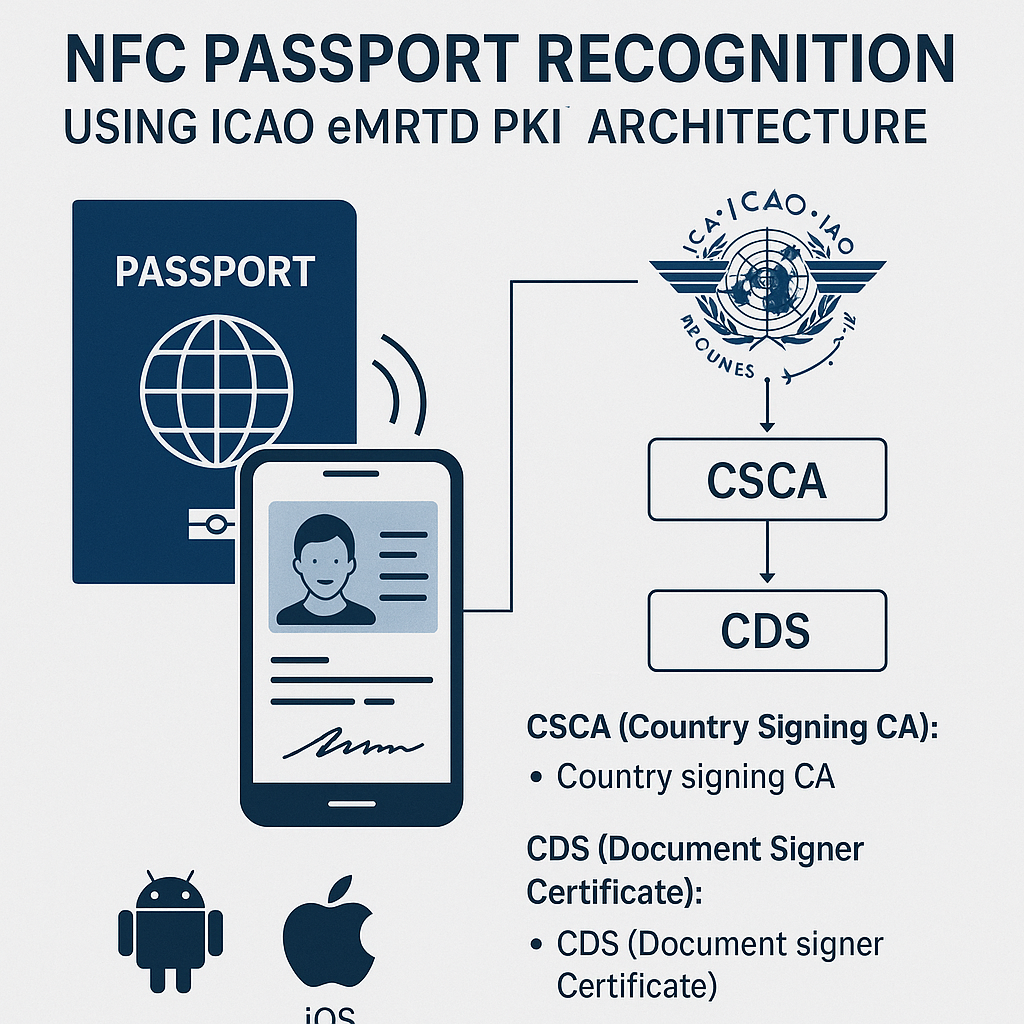Secure Passport Verification with NFC and ICAO PKI: A Deep Dive
2025-07-07Secure Passport Verification with NFC and ICAO PKI: A Deep Dive
In an increasingly digital world, ensuring the authenticity of identity documents is critical. At Sinosecu Technology Corporation, we specialize in NFC-based passport verification solutions that leverage the ICAO eMRTD PKI framework to detect forged or tampered passports. Our technology supports Android and iOS, enabling seamless integration for border control, travel agencies, banking, and other identity-sensitive industries.
This article explores how ICAO’s Public Key Infrastructure (PKI) works, the role of CSCA and CDS certificates, and the challenges in global passport verification.

Understanding ICAO eMRTD PKI Architecture
The International Civil Aviation Organization (ICAO) has established a two-layer PKI system to secure electronic Machine Readable Travel Documents (eMRTDs), such as biometric passports.
1. Country Signing Certificate Authority (CSCA)
· The root trust anchor for each country’s e-passport system.
· Issued by a national authority (e.g., immigration or passport office).
· Signs Document Signer Certificates (CDS) and intermediate certificates.
· Must be securely distributed to other countries for cross-border verification.
2. Document Signer Certificate (CDS)
· Used to digitally sign passport data stored in the chip.
· Ensures data integrity and authenticity via passive authentication (PA).
· Each passport’s chip contains an EF.SOD (Security Object Document), which includes hashed and signed personal data.
How Passive Authentication Works
Passive Authentication (PA) is a security mechanism that verifies whether an e-passport’s data has been altered or forged. Here’s how it works:
1.Read the Passport’s Data Groups (DG1, DG2, etc.)
· DG1: Personal details (name, nationality, etc.)
· DG2: Biometric photo
· Other DGs may include fingerprints or iris scans.
2.Extract the SOD File
· The EF.SOD contains hashes of all data groups, signed by the CDS.
3.Verify the Certificate Chain
· Check if the CDS certificate is valid and issued by a trusted CSCA.
· Ensure no certificates are revoked (using CRLs or OCSP).
4.Validate the Digital Signature
· Recompute hashes of the passport data and compare them against the signed hashes in the SOD.
If all checks pass, the passport is authentic and untampered.
Key Challenges in Global Passport Verification
Despite the robust PKI system, several challenges exist:
1. Cross-Border Trust Issues
· Countries must exchange CSCA certificates to verify foreign passports.
· Some nations do not publish their CSCA certificates publicly, limiting verification.
2. Certificate Revocation Management
· If a CDS private key is compromised, all passports signed by it must be revoked.
· Checking Certificate Revocation Lists (CRLs) in real-time is difficult.
3. Complex Certificate Chain Validation
· Some countries use intermediate certificates between CSCA and CDS.
· Verifying the full chain requires up-to-date trust anchors.
4. Legacy Passports Without NFC Chips
· Older passports may lack digital signatures, requiring fallback to visual inspection.
Why Choose Sinosecu’s NFC Passport Verification?
Our solution addresses these challenges with:
· Real-time CSCA & CDS validation
· Support for ICAO 9303 standards
· Seamless Android & iOS integration
· Offline-capable verification (with periodic CRL updates)
Whether for border security, KYC compliance, or travel apps, our technology ensures fast, reliable, and fraud-resistant passport checks.
Conclusion
The ICAO eMRTD PKI provides a strong foundation for secure passport verification, but implementation requires expertise in certificate chain validation, revocation checks, and NFC data extraction.
At Sinosecu Technology, we simplify this process with our NFC passport SDK, helping businesses and governments combat identity fraud efficiently.
Contact us today to integrate our solution!

